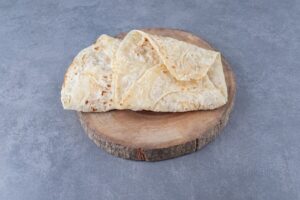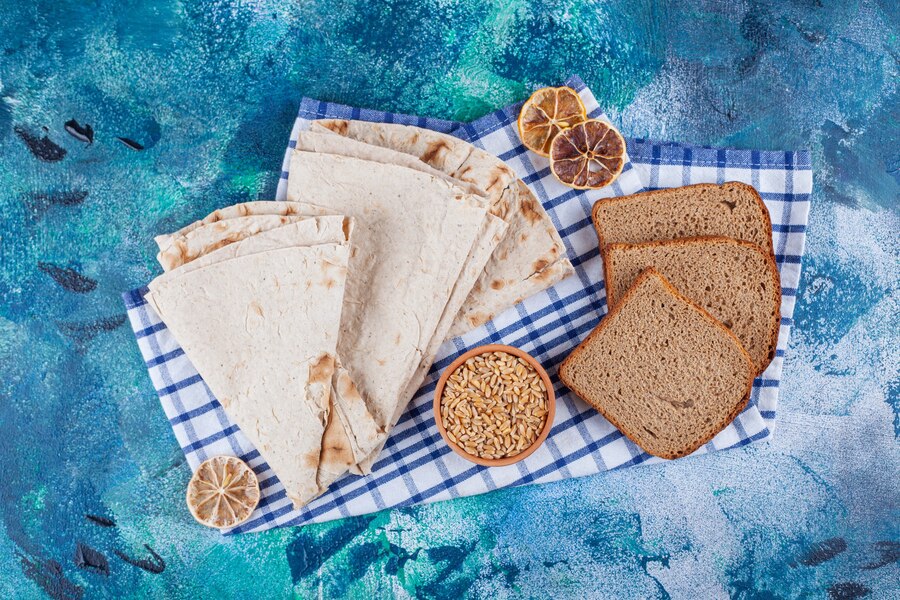Introduction
Imagine the aroma of freshly baked bread filling your home, its soft texture inviting you to savor a piece. Lavash, the iconic Armenian flatbread, carries a legacy as rich as its taste. For centuries, it has brought families and communities together, serving not just as food but as a symbol of culture and tradition. Whether you’re an adventurous cook or a curious foodie, exploring Lavash opens a window into Armenia’s culinary heritage.
In this article, you’ll uncover everything there is to know about Lavash: its history, cultural significance, how it’s made, and versatile ways to enjoy it. By the end, you’ll not only appreciate this flatbread’s charm but may also be inspired to make it a part of your kitchen repertoire.

What is Lavash?
A Brief Overview
Lavash is a thin, soft flatbread native to Armenia, renowned for its pliable texture and mild flavor. It’s often described as a culinary canvas, perfect for wrapping, dipping, or eating on its own. Unlike leavened breads, Lavash requires only a few ingredients but offers limitless possibilities.
Key Characteristics
- Texture: Thin, pliable, and slightly chewy.
- Flavor: Subtly nutty and mild, making it versatile.
- Appearance: Large, circular, or rectangular sheets.
- Baking Method: Traditionally cooked in a clay oven called a tonir.
Recognized by UNESCO as part of Armenia’s Intangible Cultural Heritage, Lavash transcends its role as a staple food to embody a cultural treasure.
History and Origins of Lavash
The Ancient Roots of Lavash
Dating back centuries, Lavash is one of the oldest types of bread in the world. Historical accounts suggest it originated in the Armenian Highlands, where its long shelf life made it ideal for storing and carrying during journeys. References to Lavash appear in ancient Armenian manuscripts, showcasing its enduring presence in the region’s history.
Lavash as a Cultural Symbol
Lavash plays a central role in Armenian traditions. In weddings, for example, Lavash is draped over the shoulders of newlyweds as a blessing for prosperity and abundance. The communal baking process also strengthens social bonds, with families gathering to prepare and bake this beloved bread.
How is Lavash Made?
Traditional Method
Making Lavash the traditional way is as much an art as it is a culinary process. Here’s how it’s done:
- Ingredients: Simple yet essential—flour, water, and salt.
- Kneading: The dough is worked until smooth and elastic.
- Resting: After kneading, the dough rests to relax the gluten.
- Rolling: Thin sheets are rolled out by hand, often as thin as parchment paper.
- Baking: The rolled dough is slapped onto the walls of a tonir, where it cooks in seconds at high temperatures.
The result? A soft, flexible bread that’s perfect for various dishes.
Modern Variations
While the tonir remains integral to traditional Lavash, modern kitchens offer alternative methods:
- Baking in conventional ovens.
- Cooking on a hot skillet or griddle.
- Using yeast for a slightly fluffier texture.
With these adaptations, you can enjoy Lavash even without traditional equipment.
Lavash Recipe: Step-by-Step Guide
Ingredients
| Ingredient | Quantity | Notes |
|---|---|---|
| All-purpose flour | 4 cups | Sifted for a smooth texture |
| Water | 1 ½ cups | Warm for easier dough handling |
| Salt | 1 tsp | Enhances flavor |
| Yeast (optional) | 1 tsp | For a slightly fluffier texture |
Instructions
- Mix the Dough: Combine flour, water, and salt in a large bowl. Mix until a shaggy dough forms.
- Knead: Transfer the dough to a floured surface and knead for 8–10 minutes until smooth and elastic.
- Rest: Cover the dough and let it rest for 30 minutes to relax the gluten.
- Isolate and Roll: Isolate the mixture into little balls. Roll each ball into a thin sheet, as thin as possible.
- Cook: Heat a dry skillet over medium heat. Place the dough sheet on the skillet and cook until bubbles form. Flip and cook the other side until softly browned.
- Serve: Wrap your Lavash in a clean towel to keep it soft until ready to serve.
The Nutritional Value of Lavash
Lavash isn’t just delicious; it’s also a healthier bread option for many. Here’s what makes it a great choice:
Nutritional Profile
| Nutrient | Amount per Serving | % Daily Value |
| Calories | 120 | 6% |
| Protein | 4g | 8% |
| Carbohydrates | 24g | 8% |
| Fat | 1g | 2% |
Health Benefits
- Low in Fat: Perfect for those observing their fat intake.
- Versatile: Pairs well with proteins, veggies, and healthy fats for a balanced meal.
- Simple Ingredients: Free from preservatives or additives.
Ways to Use Lavash in Your Meals
Lavash’s versatility makes it a staple in countless dishes. Here are some creative ways you can use it:
Wraps and Rolls
- Savory: Fill with grilled chicken, fresh veggies, and hummus.
- Breakfast: Roll up scrambled eggs and cheese for a quick morning meal.
Dipping Bread
- Pair with baba ganoush, tzatziki, or olive tapenade for a Mediterranean flair.
Crispy Snacks
- Cut into triangles, brush with olive oil, and bake for homemade Lavash chips.
Dessert
- Spread with honey, sprinkle with nuts, and roll for a sweet treat.
Where to Buy or How to Store Lavash
Buying Tips
You can find Lavash in:
- Local Armenian or Middle Eastern grocery stores.
- Specialty online shops.
- Fresh or packaged varieties, depending on availability.
Storage Tips
- Short-term: Store in an airtight bag at room temperature for 2–3 days.
- Long-term: Freeze Lavash and reheat in the oven or microwave when needed.

Frequently Asked Questions about Lavash (FAQ)
What is the difference between Lavash and other flatbreads?
Lavash is thinner and softer compared to naan or pita, making it ideal for wraps and rolls.
Is Lavash gluten-free?
Traditional Lavash contains wheat flour, but gluten-free variations can be made using alternative flours like almond or rice flour.
How is Lavash used in Armenian culture?
Lavash is a staple in Armenian households, often paired with cheese, herbs, or kebabs. It’s also central to traditional ceremonies and feasts.
Can I make Lavash without a tonir?
Absolutely! You can use a skillet, griddle, or oven to achieve similar results.
Conclusion
Lavash isn’t just a bread; it’s a journey into Armenian culture and culinary tradition. Its simple ingredients and preparation belie its depth of flavor and versatility. Whether you try your hand at making it or explore its uses in your meals, Lavash is sure to become a cherished part of your table.
So why not start today? Whip up a batch of Lavash and experience the joy of this timeless flatbread. Share your creations and stories with us—we’d love to hear how Lavash becomes a part of your culinary adventures!

